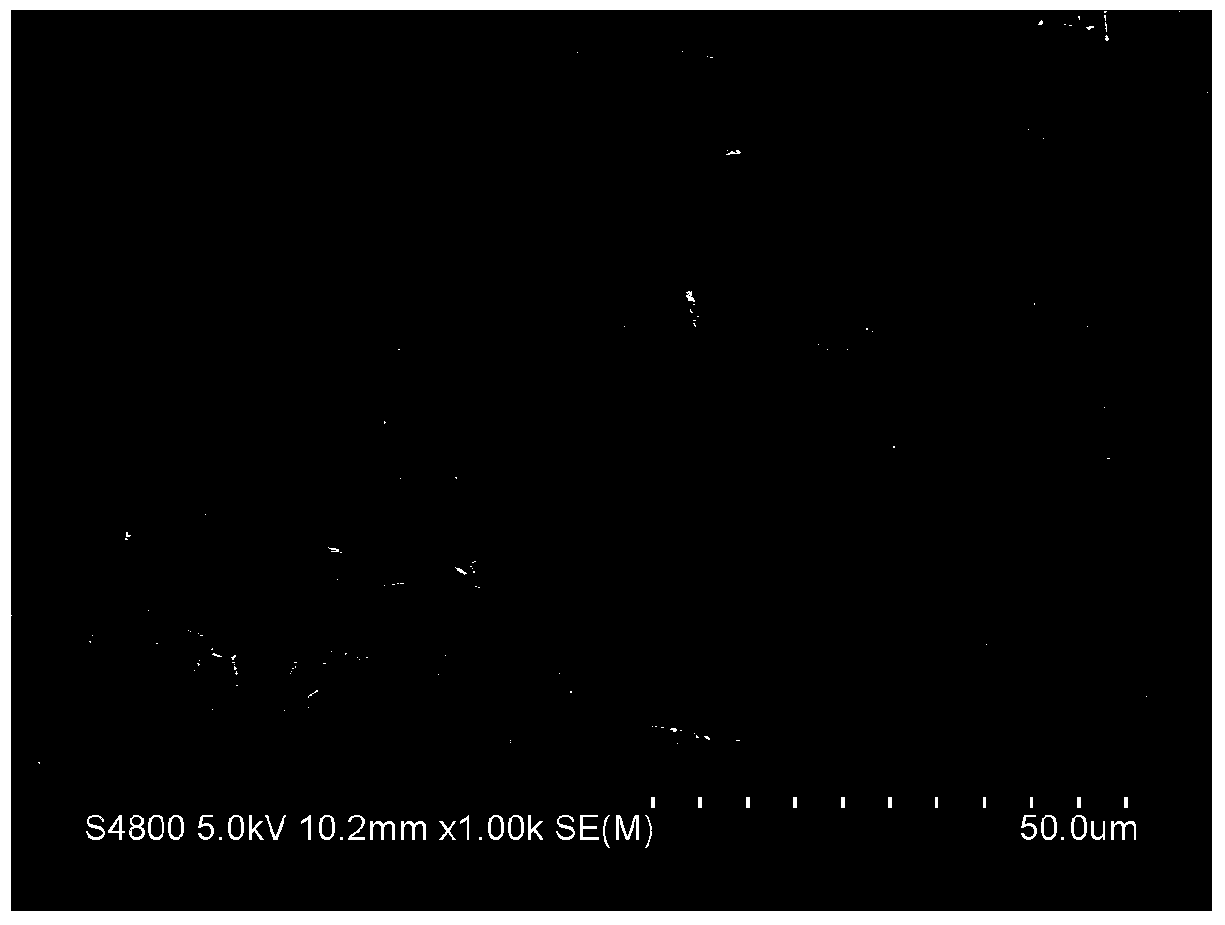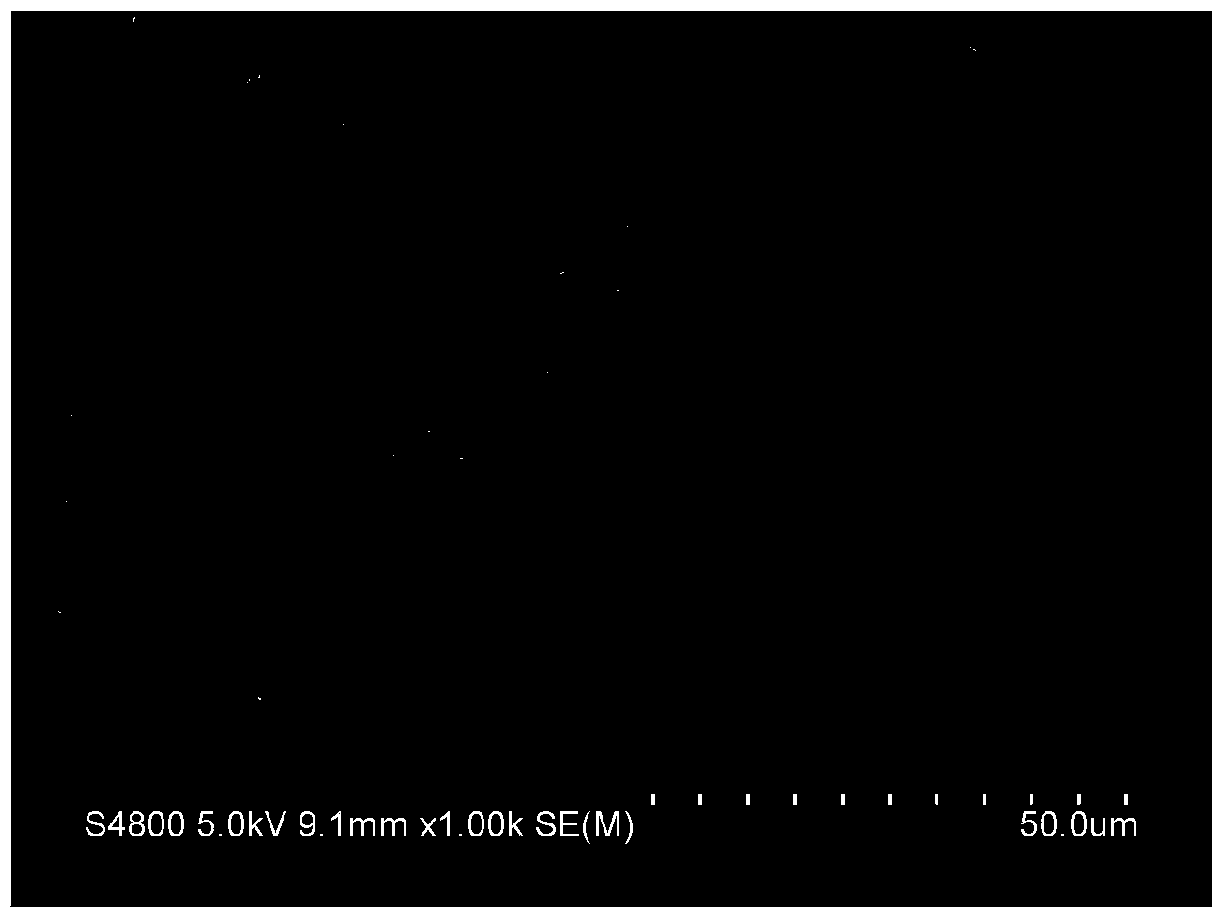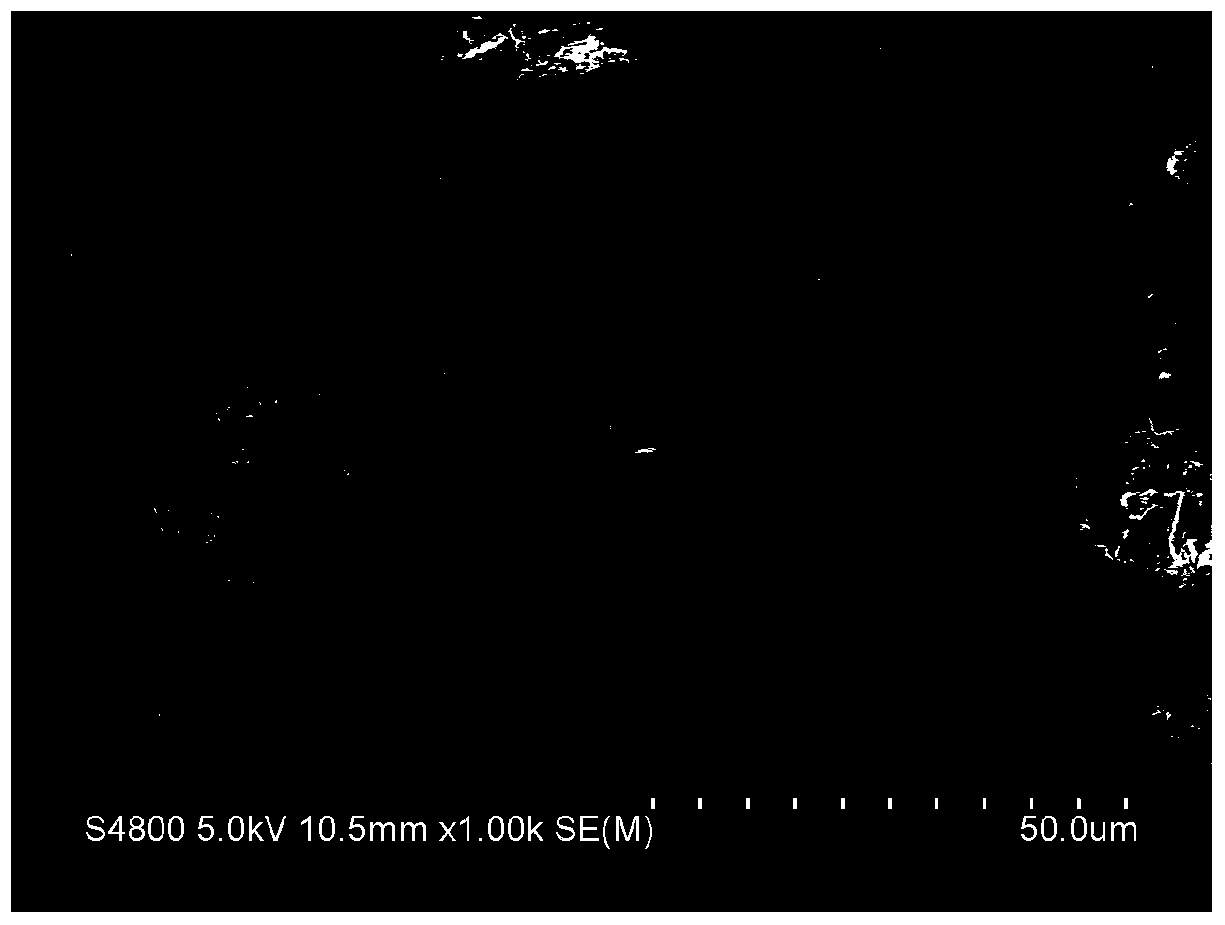Preparation method of Cf/BN-SiC composite material
A composite material and prefabricated technology, applied in the field of ceramic matrix composite materials, can solve problems such as insufficient anti-oxidation performance, achieve the effects of good anti-oxidation performance, reduce damage, and improve anti-oxidation performance
- Summary
- Abstract
- Description
- Claims
- Application Information
AI Technical Summary
Problems solved by technology
Method used
Image
Examples
Embodiment 1
[0026] Step 1: Prepare C f / BN prefab:
[0027] 1. Use carbon fiber needle-punched felt with a fiber volume fraction of 20% as the fiber prefabricated part;
[0028] 2. Using an ethylene glycol dimethyl ether solution with a borazine concentration of 10 vol% as the boron nitride precursor solution;
[0029] 3. Pressurize and cross-link the carbon fiber needle felt in the above-mentioned boron nitride precursor solution for 72 hours, and then crack it in a high-temperature furnace at 1000°C for 1 hour in a nitrogen atmosphere to obtain C with a BN content of 1.6%. f / BN prefab;
[0030] Step 2: Prepare C f / BN-C blank:
[0031] Under vacuum conditions, adopt 50wt.% ethanol solution of phenolic resin to vacuum impregnate C f / BN preform, impregnated for 2 hours, cracked in an argon atmosphere at 1000°C for 1 hour, repeated dipping and cracking 3 times to obtain C f / BN-C bisque, in which the carbon content is 31.7%;
[0032] Step 3: vapor phase siliconizing method will C ...
Embodiment 2
[0035] Step 1: Prepare C f / BN prefab:
[0036] 1. Use carbon fiber needle-punched felt with a fiber volume fraction of 35% as the fiber prefabricated part;
[0037] 2. Using an ethylene glycol dimethyl ether solution with a borazine concentration of 30 vol% as the boron nitride precursor solution;
[0038] 3. Pressurize and cross-link the carbon fiber needle felt in the above-mentioned boron nitride precursor solution for 72 hours, then crack it in a high-temperature furnace at 1000°C for 1 hour under a nitrogen atmosphere, and repeat the dipping and cross-linking-cracking twice to obtain the BN content 11.8% C f / BN prefab;
[0039] Step 2: Prepare C f / BN-C blank:
[0040] Under vacuum conditions, adopt 50wt.% ethanol solution of phenolic resin to vacuum impregnate C f / BN preform, impregnated for 2 hours, cracked at 1000°C for 1 hour under argon atmosphere, and repeated the impregnation-cracking process once to obtain C with a carbon content of 15%. f / BN-C biscuit....
Embodiment 3
[0044] Step 1: Prepare C f / BN prefab:
[0045] 1. Use carbon fiber needle-punched felt with a fiber volume fraction of 32% as the fiber prefabricated part;
[0046] 2. Using an ethylene glycol dimethyl ether solution with a borazine concentration of 20 vol% as the boron nitride precursor solution;
[0047] 3. Pressurize the carbon fiber needle felt in the above-mentioned boron nitride precursor solution for cross-linking for 72 hours, and then crack it in a high-temperature furnace at 1000 °C for 1 hour in a nitrogen atmosphere to obtain C with a BN content of 6.6%. f / BN prefab;
[0048] Step 2: Prepare C f / BN-C blank:
[0049] Under vacuum conditions, adopt 50wt.% ethanol solution of phenolic resin to vacuum impregnate C f / BN preform, impregnated for 2h, cracked at 1000°C for 1h under an argon atmosphere, repeated the impregnation-cracking process twice, and obtained C with a carbon content of 23.3%. f / BN-C biscuit;
[0050] Step 3: vapor phase siliconizing method...
PUM
| Property | Measurement | Unit |
|---|---|---|
| density | aaaaa | aaaaa |
| density | aaaaa | aaaaa |
| flexural strength | aaaaa | aaaaa |
Abstract
Description
Claims
Application Information
 Login to View More
Login to View More - R&D
- Intellectual Property
- Life Sciences
- Materials
- Tech Scout
- Unparalleled Data Quality
- Higher Quality Content
- 60% Fewer Hallucinations
Browse by: Latest US Patents, China's latest patents, Technical Efficacy Thesaurus, Application Domain, Technology Topic, Popular Technical Reports.
© 2025 PatSnap. All rights reserved.Legal|Privacy policy|Modern Slavery Act Transparency Statement|Sitemap|About US| Contact US: help@patsnap.com



